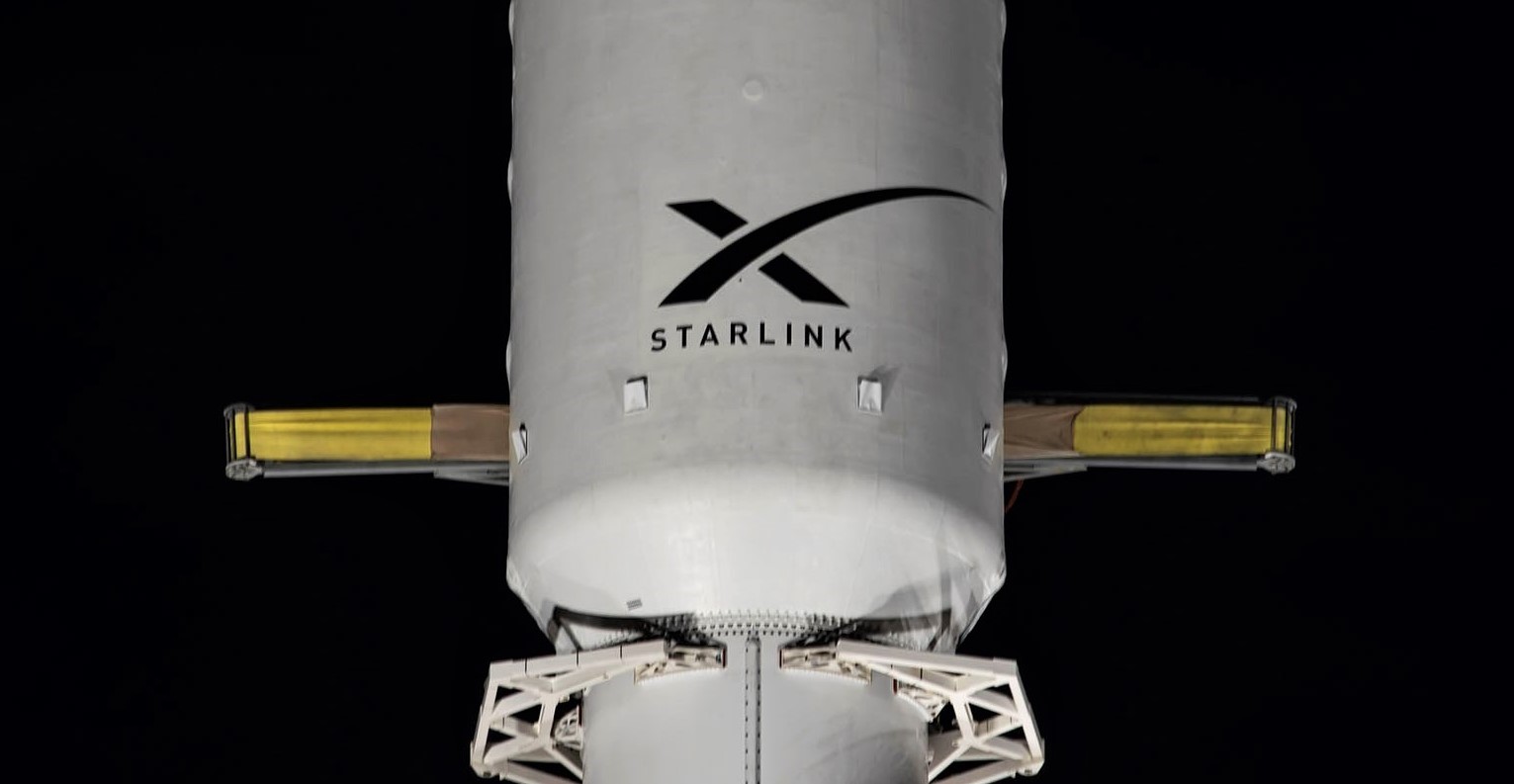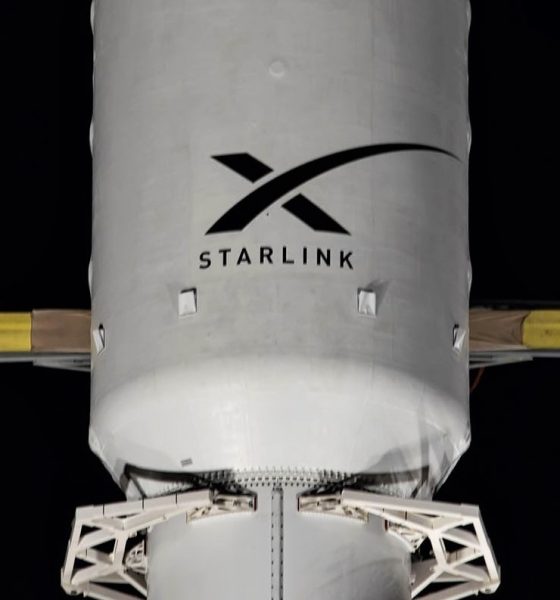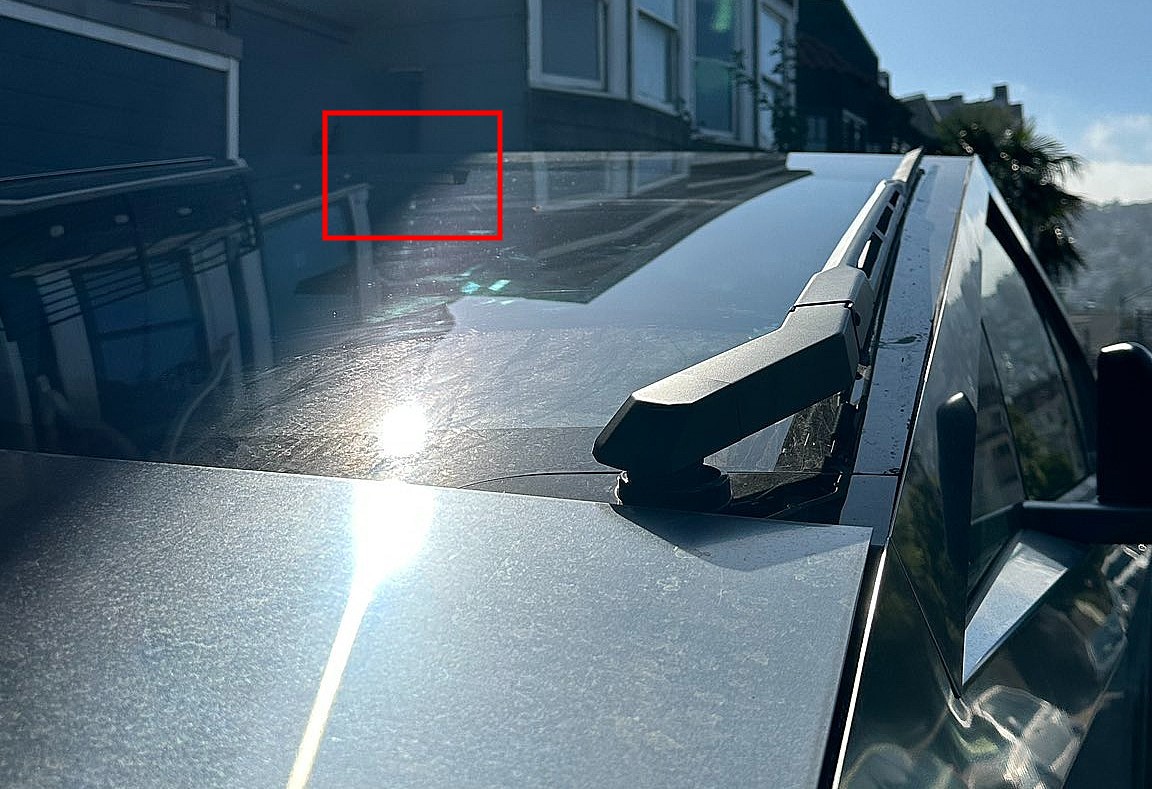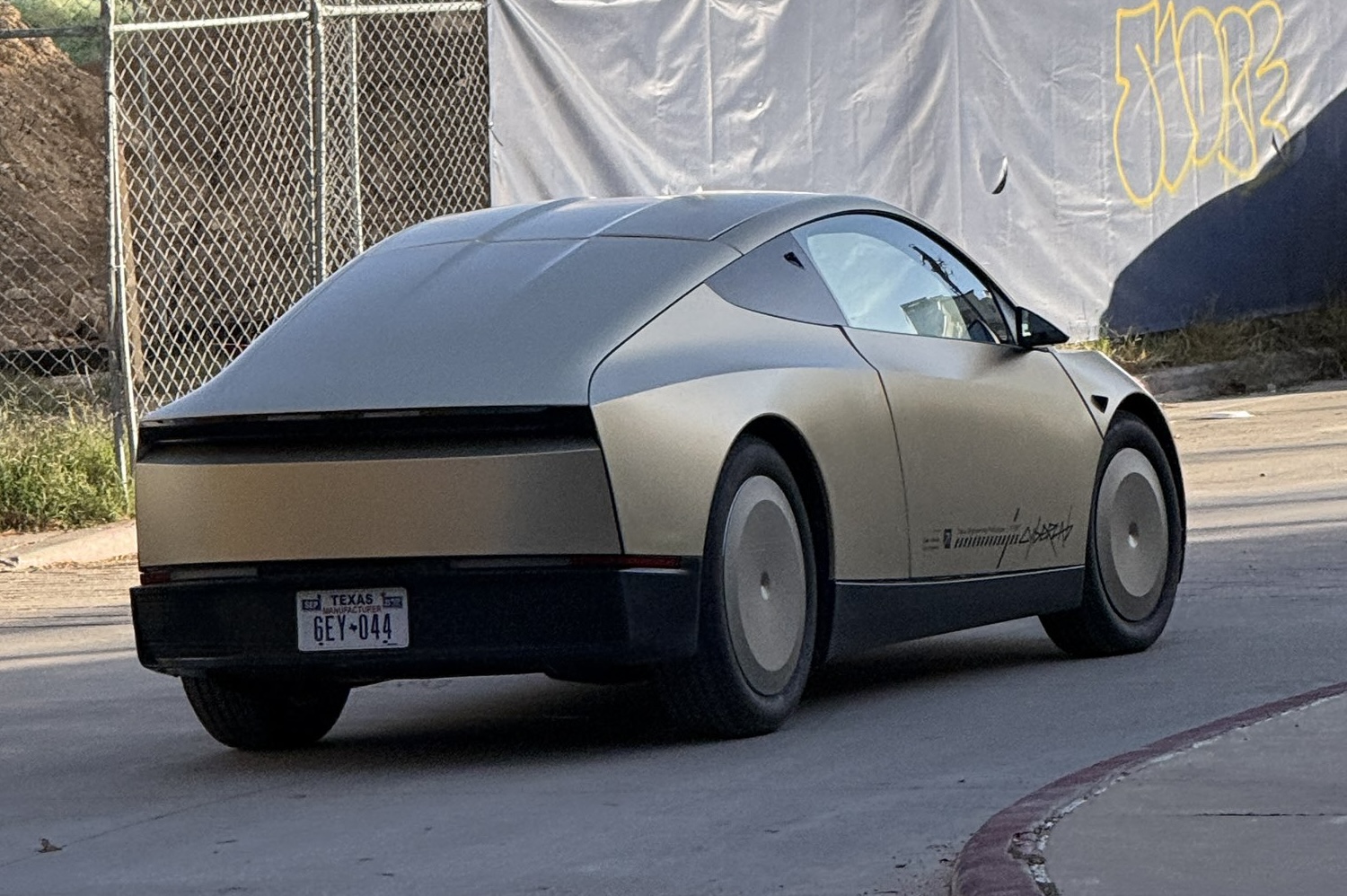

News
SpaceX’s first “next-gen” Starlink satellites are suspiciously familiar
In a strange twist, SpaceX says that its next Starlink mission will launch 54 satellites into low Earth orbit (LEO), implying that they’re roughly the same size as the V1.5 satellites it’s already launching – not the larger V2 or V2 Mini satellites discussed in recent FCC filings.
However, the data SpaceX provided also shows that those 54 satellites are headed to an orbit that only matches the company’s next-generation Starlink Gen2 (V2) constellation. While SpaceX quietly indicated that a V1.5-sized satellite was an option for early Gen2 launches in a supplemental October 2022 filing [PDF] with the FCC, it’s still unclear why SpaceX would prioritize launching V1.5-sized V2 satellites while its V1 constellation remains unfinished.
Adding to the confusion, in November 2021, CEO Elon Musk strongly implied that the inefficiencies of smaller Starlink V1.x satellites were so significant that they could risk bankrupting SpaceX if the company couldn’t start launching larger V2 satellites on its next-generation Starship rocket by the end of 2022. What, then, is the purpose of SpaceX’s imminent “Starlink G5-1” launch?
The update that's rolling out to the fleet makes full use of the front and rear steering travel to minimize turning circle. In this case a reduction of 1.6 feet just over the air— Wes (@wmorrill3) April 16, 2024
The name alone is confusing. Using the same shorthand as past Starlink V1 launches, “G5-1” refers to the first launch of “Group 5” of a constellation. “Group” here is synonymous with “shell,” which describes a set of satellites that share the same orbital inclination (the angle at which the orbit crosses the equator) and a similar orbital altitude. Of SpaceX’s three approved constellations, only one has five shells, and that shell can only exist at 97.6 degrees, not 43 degrees. SpaceX’s Gen2 constellation technically has nine planned shells, but the FCC has only partially approved three of those shells, one of which is at 43 degrees.
Ignoring the obtuse name, one possibility is that aspects of Starlink V2 satellite upgrades are not explicitly tied to the much larger size of those satellites and can be applied to SpaceX’s first-generation Starlink constellation without requiring a modified FCC license. If SpaceX wanted to add larger satellites to its V1 constellation or change the frequency bands they use, it would almost certainly have to seek a modified license from the FCC, which could take months.
There is no evidence SpaceX has done so, and any attempt would produce public documentation. The 43-degree inclination SpaceX’s mysterious “Starlink G5-1” launch is targeting also rules out any involvement in its V1 constellation, which only has approval for satellites between 53 and 97.6 degrees.
Aside from the unlikely possibility that details about the Starlink 5-1 mission are somehow incorrect or an artifact of a messy launch licensing process, there is at least one other unlikely explanation. In October 2018, the FCC granted SpaceX permission to launch a very low earth orbit (VLEO) constellation of 7518 Starlink satellites with dimensions similar to satellites that make up the 4408-satellite constellation the company is currently launching. More than four years later, SpaceX has yet to begin launching its approved VLEO constellation.
In November 2022, SpaceX told the FCC it intended to combine its Starlink VLEO and Starlink Gen2 constellations by adding V-band antennas to some of the almost 33,000 Gen2 satellites it hoped to launch – a move that would reduce the total number of Starlink satellites SpaceX needs to launch. Around the turn of the month, the FCC partially granted SpaceX’s Starlink Gen2 license, adding unprecedentedly strict requirements and only permitting the launch of 7500 of 33,000 planned Gen2 satellites to a limited set of inclinations (33, 43, and 53 degrees).
Perhaps, then, the uncertainty created by the FCC’s strange partial Gen2 grant made SpaceX change its mind about a dedicated Starlink VLEO constellation. However, without a license modification, SpaceX’s VLEO constellation is stuck with the same smaller (and potentially bankruptcy-inducing) satellites that its CEO believes make the first Starlink V1 constellation unsustainable. SpaceX also has less than two years until its VLEO constellation crosses its first deployment milestone, at which point the company will need to have launched half of it (3759 satellites) to avoid penalties from the FCC – up to and including the revocation of its license.
Despite the numerous reasons it wouldn’t make sense for Starlink 5-1 to be SpaceX’s first Starlink VLEO launch, almost 2500 of SpaceX’s approved VLEO satellites were intended to operate in a 336-kilometer (~209 mi) orbit inclined by 42 degrees – oddly similar to the 338-kilometer (~210 mi), 43-degree orbit SpaceX appears to be targeting with Starlink 5-1.
A surprise VLEO launch is a very unlikely explanation, but it’s only marginally stranger than the alternatives: that Starlink 5-1 is a V1-sized V2 launch with no prior mention or warning, a V1 launch to an orbit that would explicitly violate SpaceX’s Starlink V1 FCC license, or a paperwork error that has propagated so far that SpaceX distributed incorrect orbit information (which could threaten other satellites and rockets) less than two days before liftoff.
Thankfully, there is one last explanation – raised after this article was published – that appears to be much more likely. In response to a tweet summarizing these claims, astrophysicist Jonathan McDowell noted that SpaceX had, in fact, mentioned a third smaller Starlink V2 satellite variant in an October 2022 FCC filing that fell mostly under the radar. In that filing, SpaceX told that FCC it was developing three variants, not two. The smallest variant was said to weigh 303 kilograms and featured dimensions seemingly identical to SpaceX’s existing V1.5 satellites, which are estimated to weigh around 307 kilograms. SpaceX also stated that initial Falcon 9 launches will carry “approximately twenty to sixty satellites,” again confirming that V2 satellites could be about the same size and shape as V1.5 satellites.
SpaceX’s decision to develop a V1.5-sized version of V2 satellites makes little sense in the context of Musk’s implicit claims that problems inherent to its smaller V1 satellites threaten the company’s solvency. It’s clearer than ever that the SpaceX CEO may have been stretching the truth of the matter to craft an existential threat that might encourage employees to work longer hours. Still, developing and launching a V1.5-sized V2 satellite variant and beginning to launch those satellites while SpaceX’s Starlink Gen1 is more than 25% incomplete is confusing at best.
Regardless of what it’s carrying or why, a SpaceX Falcon 9 rocket is scheduled to launch Starlink 5-1 out of Florida’s Cape Canaveral Space Force Station (CCSFS) no earlier than 4:40 am EST (09:40 UTC) on Wednesday, December 28th.

News
Tesla aims to combat common Full Self-Driving problem with new patent
Tesla writes in the patent that its autonomous and semi-autonomous vehicles are heavily reliant on camera systems to navigate and interact with their environment.

Tesla is aiming to combat a common Full Self-Driving problem with a new patent.
One issue with Tesla’s vision-based approach is that sunlight glare can become a troublesome element of everyday travel. Full Self-Driving is certainly an amazing technology, but there are still things Tesla is aiming to figure out with its development.
Unfortunately, it is extremely difficult to get around this issue, and even humans need ways to combat it when they’re driving, as we commonly use sunglasses or sun visors to give us better visibility.
Cameras obviously do not have these ways to fight sunglare, but a new patent Tesla recently had published aims to fight this through a “glare shield.”
Tesla writes in the patent that its autonomous and semi-autonomous vehicles are heavily reliant on camera systems to navigate and interact with their environment.

The ability to see surroundings is crucial for accurate performance, and glare is one element of interference that has yet to be confronted.
Tesla described the patent, which will utilize “a textured surface composed of an array of micro-cones, or cone-shaped formations, which serve to scatter incident light in various directions, thereby reducing glare and improving camera vision.”

The patent was first spotted by Not a Tesla App.
The design of the micro-cones is the first element of the puzzle to fight the excess glare. The patent says they are “optimized in size, angle, and orientation to minimize Total Hemispherical Reflectance (THR) and reflection penalty, enhancing the camera’s ability to accurately interpret visual data.”
Additionally, there is an electromechanical system for dynamic orientation adjustment, which will allow the micro-cones to move based on the angle of external light sources.
This is not the only thing Tesla is mulling to resolve issues with sunlight glare, as it has also worked on two other ways to combat the problem. One thing the company has discussed is a direct photon count.
CEO Elon Musk said during the Q2 Earnings Call:
“We use an approach which is direct photon count. When you see a processed image, so the image that goes from the sort of photon counter — the silicon photon counter — that then goes through a digital signal processor or image signal processor, that’s normally what happens. And then the image that you see looks all washed out, because if you point the camera at the sun, the post-processing of the photon counting washes things out.”
Future Hardware iterations, like Hardware 5 and Hardware 6, could also integrate better solutions for the sunglare issue, such as neutral density filters or heated lenses, aiming to solve glare more effectively.
Elon Musk
Delaware Supreme Court reinstates Elon Musk’s 2018 Tesla CEO pay package
The unanimous decision criticized the prior total rescission as “improper and inequitable,” arguing that it left Musk uncompensated for six years of transformative leadership at Tesla.

The Delaware Supreme Court has overturned a lower court ruling, reinstating Elon Musk’s 2018 compensation package originally valued at $56 billion but now worth approximately $139 billion due to Tesla’s soaring stock price.
The unanimous decision criticized the prior total rescission as “improper and inequitable,” arguing that it left Musk uncompensated for six years of transformative leadership at Tesla. Musk quickly celebrated the outcome on X, stating that he felt “vindicated.” He also shared his gratitude to TSLA shareholders.
Delaware Supreme Court makes a decision
In a 49-page ruling Friday, the Delaware Supreme Court reversed Chancellor Kathaleen McCormick’s 2024 decision that voided the 2018 package over alleged board conflicts and inadequate shareholder disclosures. The high court acknowledged varying views on liability but agreed rescission was excessive, stating it “leaves Musk uncompensated for his time and efforts over a period of six years.”
The 2018 plan granted Musk options on about 304 million shares upon hitting aggressive milestones, all of which were achieved ahead of time. Shareholders overwhelmingly approved it initially in 2018 and ratified it once again in 2024 after the Delaware lower court struck it down. The case against Musk’s 2018 pay package was filed by plaintiff Richard Tornetta, who held just nine shares when the compensation plan was approved.
A hard-fought victory
As noted in a Reuters report, Tesla’s win avoids a potential $26 billion earnings hit from replacing the award at current prices. Tesla, now Texas-incorporated, had hedged with interim plans, including a November 2025 shareholder-approved package potentially worth $878 billion tied to Robotaxi and Optimus goals and other extremely aggressive operational milestones.
The saga surrounding Elon Musk’s 2018 pay package ultimately damaged Delaware’s corporate appeal, prompting a number of high-profile firms, such as Dropbox, Roblox, Trade Desk, and Coinbase, to follow Tesla’s exodus out of the state. What added more fuel to the issue was the fact that Tornetta’s legal team, following the lower court’s 2024 decision, demanded a fee request of more than $5.1 billion worth of TSLA stock, which was equal to an hourly rate of over $200,000.
Delaware Supreme Court Elon Musk 2018 Pay Package by Simon Alvarez
News
Tesla Cybercab tests are going on overdrive with production-ready units
Tesla is ramping its real-world tests of the Cybercab, with multiple sightings of the vehicle being reported across social media this week.

Tesla is ramping its real-world tests of the Cybercab, with multiple sightings of the autonomous two-seater being reported across social media this week. Based on videos of the vehicle that have been shared online, it appears that Cybercab tests are underway across multiple states.
Recent Cybercab sightings
Reports of Cybercab tests have ramped this week, with a vehicle that looked like a production-ready prototype being spotted at Apple’s Visitor Center in California. The vehicle in this sighting was interesting as it was equipped with a steering wheel. The vehicle also featured some changes to the design of its brake lights.
The Cybercab was also filmed testing at the Fremont factory’s test track, which also seemed to involve a vehicle that looked production-ready. This also seemed to be the case for a Cybercab that was spotted in Austin, Texas, which happened to be undergoing real-world tests. Overall, these sightings suggest that Cybercab testing is fully underway, and the vehicle is really moving towards production.
Production design all but finalized?
Recently, a near-production-ready Cybercab was showcased at Tesla’s Santana Row showroom in San Jose. The vehicle was equipped with frameless windows, dual windshield wipers, powered butterfly door struts, an extended front splitter, an updated lightbar, new wheel covers, and a license plate bracket. Interior updates include redesigned dash/door panels, refined seats with center cupholders, updated carpet, and what appeared to be improved legroom.
There seems to be a pretty good chance that the Cybercab’s design has been all but finalized, at least considering Elon Musk’s comments at the 2025 Annual Shareholder Meeting. During the event, Musk confirmed that the vehicle will enter production around April 2026, and its production targets will be quite ambitious.








